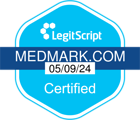
The National Institute on Drug Abuse (NIDA) has published the results of a study linking opiate prescriptions written for teens with a subsequent adolescent opiate addiction problem. The study was undertaken by researchers at the University of Michigan, and results of the study were funded by the American Academy of Pediatrics and published in the medical journal Pediatrics.
With increasing amounts of research focusing on the ways that adults become addicted to opiates, this latest study tells us that our children just as susceptible to the effects of opiate drugs. We risk a potential opiate addiction that they will have to fight for a lifetime if we permit their doctors to prescribe pain pills for them.
According to NIDA, the study demonstrates that those adolescents who received a prescription for pain pills while in the twelfth grade of high school were 33 percent more likely to develop an opiate addiction between the ages of 19 and 25. Ironically, the teens who most often succumbed to adolescent opiate addiction were those who had never abused a drug of any kind, including marijuana, or those who spoke outright against the use of drugs.
Researchers discovered that their anti-drug attitude left them unprepared for the tempting, euphoric effects of opiate pain pills. They also believed that the drugs were safe because a medical professional had prescribed the drug for them. The teens who had prior drug experience, on the other hand, were often more nonchalant about the effects of the pain pills and were better able to take the prescribed drugs and then be done with them.
The study was accomplished as part of the Monitoring the Future program. Researchers utilized a base of 6,220 adolescents who responded to surveys in the twelfth grade and were then followed periodically throughout the age of 23. The teens’ individual known risk factors—prior drug use, living with a drug-abusing family member, and so forth—were taken into account.
Brain Function and Adolescent Opiate Addiction
Other research published by experts from the University of California at San Diego and the VA San Diego Healthcare System indicates that while the adolescent brain remains within its developmental stages, the teen is at risk of prolonged abnormal functioning—and this comes as no surprise to anybody who has lived with a teen! Just marijuana and alcohol use alone, without the addition of other drugs, results in changes of the brain’s volume and quality of white matter, which involves the brain’s ability for optimal neuro-conductivity. The result is an adverse effect on the teen’s ability to learn, remember, and develop logical thought processes.
The brain of a teen who experiences adolescent opiate addiction loses its ability to resist risk-taking behaviors, a clear indication of danger from drugs for a teen in trouble. Teenagers simply don’t recognize the signals that put adults on alert that something is wrong. There is also an interruption in their emotional development, and this can dampen their ability to develop healthy emotional relationships throughout their life.
Did You Use as a Teen?
Many people battling opiate addiction can trace their earliest drug use experiences back to their teen years. If that is you, ask yourself if you’ve had trouble maintaining successful relationships. Ask yourself if you seem all-to-willing to take the risks that can put your health, money, or legal status at risk. Ask yourself if you often have trouble problem solving or thinking through complex situations.
If so, you may have been affected by your adolescent opiate addiction, but it’s never too late to work out solutions that will improve your life. Maybe your preoccupation with pain pills has continued into adulthood or you’ve made the unfortunate move from pain pills to heroin. Either way, if you opt for methadone therapy for opiate addiction, you will find it easier to get off heroin or pain pills and stay off them. You will also participate in individual counseling that will help you learn some little tricks for improving your reactions and behaviors.
Substance abuse treatment counselors utilize cognitive behavioral therapy and motivational interviewing to find out just what you would like to change in your life and give you the ability to make those changes. After all, it’s not about what the counselor thinks you should get out of life—it’s what you want for your own future.
Do You Have a Teen Who Uses?
If you are the parent of a teenager who is abusing drugs of any type, including pain pills, get them into treatment as soon as possible. A teen suffering from adolescent opiate addiction cannot participate in medication-assisted treatment programs until they are 18 but do not wait until then to get help.
Your job as a parent is to draw boundaries and to hold your teen accountable. You should never shrug your shoulders about any drugs that your teenager is taking—even an attitude such as “it’s just marijuana” or “it’s only booze” tells your teenager that you do not care if they put poison in their body.
You should be especially vigilant if your teenager is injured and must receive treatment. Take them to the doctor but be wary of accepting prescriptions for opiate pain pills to treat the problem. It is your parental responsibility to keep them as drug-free as possible, including pain pills that can lead to adolescent opiate addiction.
Twelve-step groups constitute an important part of treatment for adolescent opiate addiction. Unfortunately, it’s often difficult to find groups that will interest teens, but they are out there. If you don’t have a community teen group for drug addiction in your neighborhood, then inquire at the local college. Almost all colleges have 12-step groups, and many of them will put your twelfth-grade teenager in touch with a college student who can steer them in the right direction.
If your teenager is age 18 or older, he or she may then be eligible to participate in methadone or buprenorphine treatment. Many treatment providers recommend buprenorphine over methadone for adolescents, because it is prescribed by the week or month and does not require daily clinic visits. Talk to your local medication-assisted treatment clinic to find out what options are available where you live.



